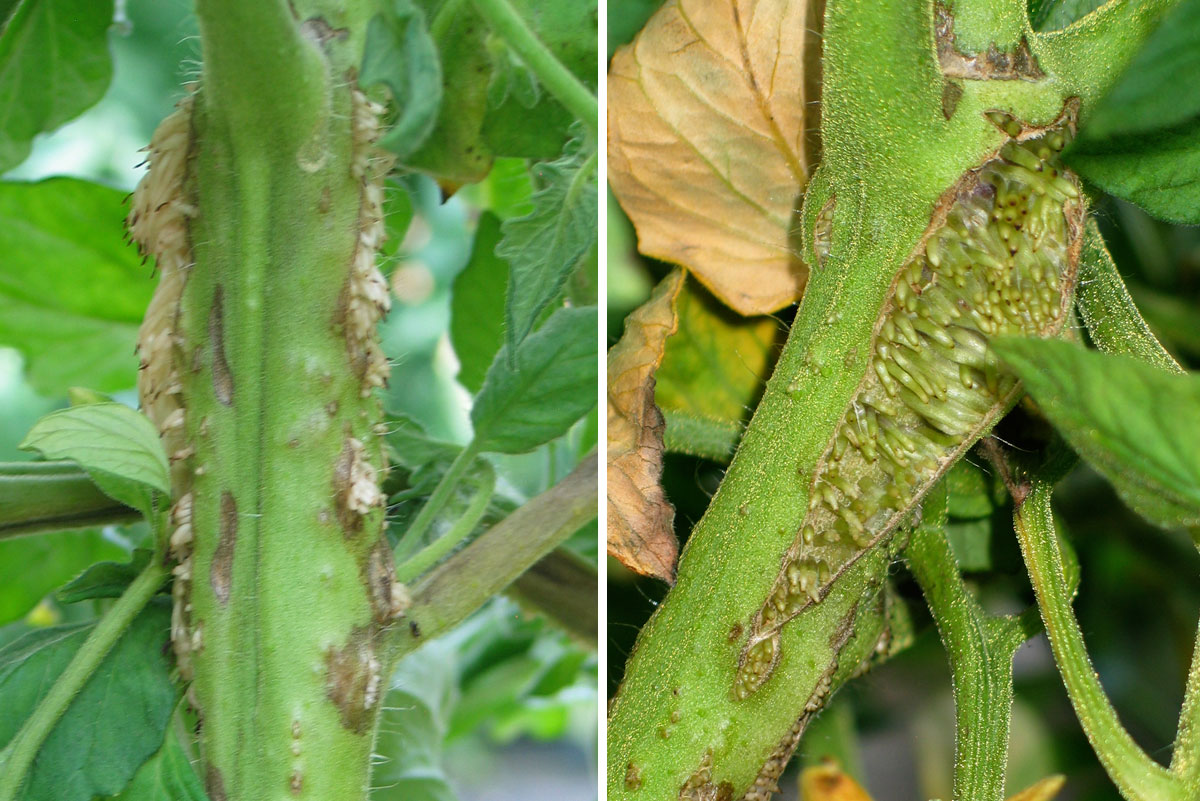
However, Barbara Ingham, food safety specialist at the University of Wisconsin-Extension, advises consumers to resist the temptation to eat diseased tomatoes or potatoes. Margaret McGrath, a plant pathologist at Cornell University and a specialist in the disease. Tomato parts without disease symptoms probably do not pose a health risk to consumers,” says Dr. “The parts that are not infected are probably safe to eat. Blight – is it possible to eat the tomatoes? A lesion on the flesh of the fruit is discovered only when the vegetable is cut open. In this case, the disease develops without visible signs. It is not uncommon for tomatoes to become damaged internally as well. A thin, white mold coating forms on infected leaves, fruit, and stems when humidity is high.The spots may become mushy as secondary bacteria invade. Dark brown, irregular spots cover large portions of the fruit.Dead leaves usually remain attached to the stems. These spots increase in size until the entire leaf or stem turns brown and dies.Leaves have large, dark brown spots with a green-gray edge that are not bordered by the main veins of the leaf.This is how you can recognize tomato blight: If brown spots appear on the leaves, this can be confused with leaf spot disease(Alternaria tomatophila). Many growers do not immediately recognize that the crop is infected. But you will want to continue to monitor the plants as blight can live on the stem and travel that way as well.It is difficult to detect blight in tomato plants in the early stages of the disease. As far as peppers and eggplant go, you can harvest the tiny crops, but they'll be harder to consume as they may just be too immature.īut remember, if only a few leaves on your plant are affected, you don't need to pull up the entire plant. You can also harvest any green tomatoes if the plant needs to be pulled up and see if they'll ripen on your countertop. Yes! You can eat the new potatoes (baby potatoes) that are on the diseased plants. You can read more about watering methods here (or listen to the podcast).Ĭan I eat the vegetables that have been affected with early blight? Trying to keep your plants as dry as possible is ideal, which is why I like to use soaker hoses. Though watering with a sprinkler from above may seem easy and the most cost-effective route, it can also keep your plants damp which allows these fungi to grow and spread. Water from BelowĪs mentioned before, it's important to know the best method for watering your garden.

Avoid Touching Healthy PlantsĪs you're going along in your garden removing any affected leaves, try not to touch your healthy plants with your hands because the spores will be on your fingers and can be spread unintentionally. I bring a plastic grocery bag into the garden so I can bag the leaves up and throw them in the trash or even burn them as soon as possible. Like I said before, the spores can travel by wind, so we don't want to potentially cause another outbreak in the future. Don't simply drop them far away from your garden or in your compost pile. You'll want to remove the leaves and dispose of them either in the trash or by burning them. Don't drop the diseased leaves on the ground of your garden.īecause early blight is caused by spores, the spores are still alive and active on those plant leaves. It's important to properly discard the diseased leaves and plants so the fungus can't continue to spread.


 0 kommentar(er)
0 kommentar(er)
